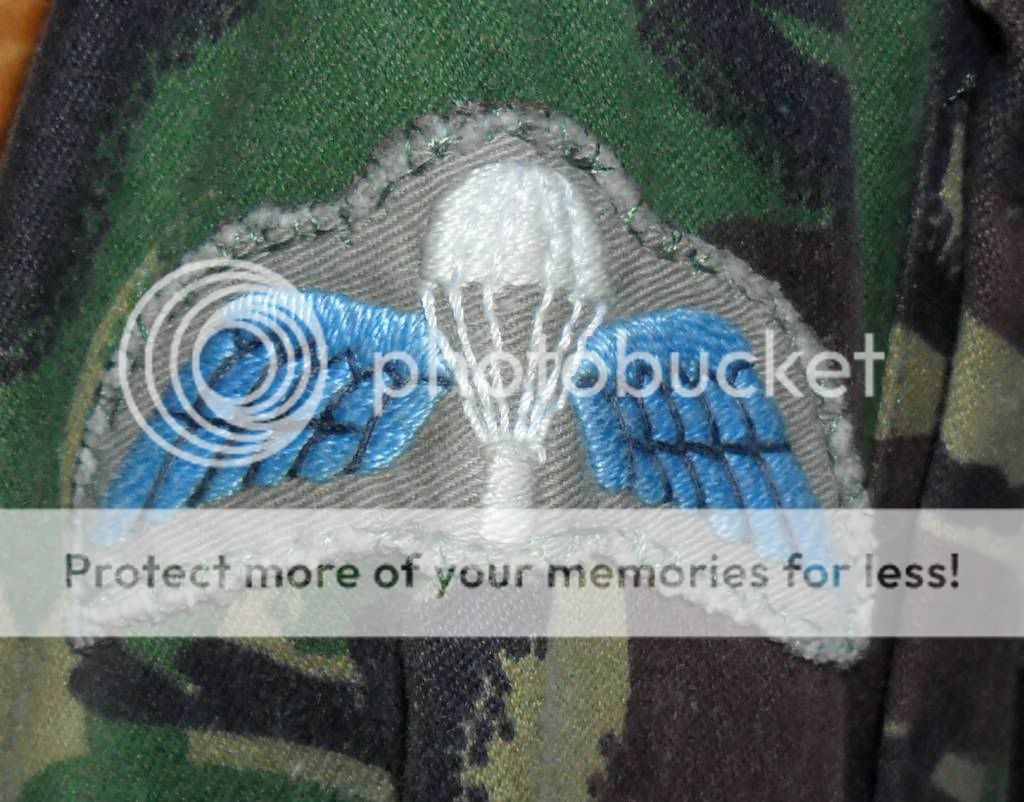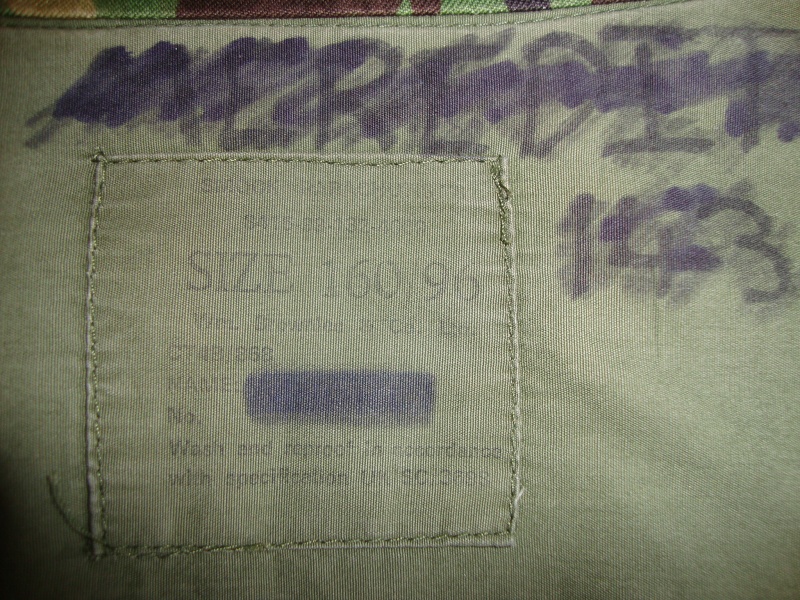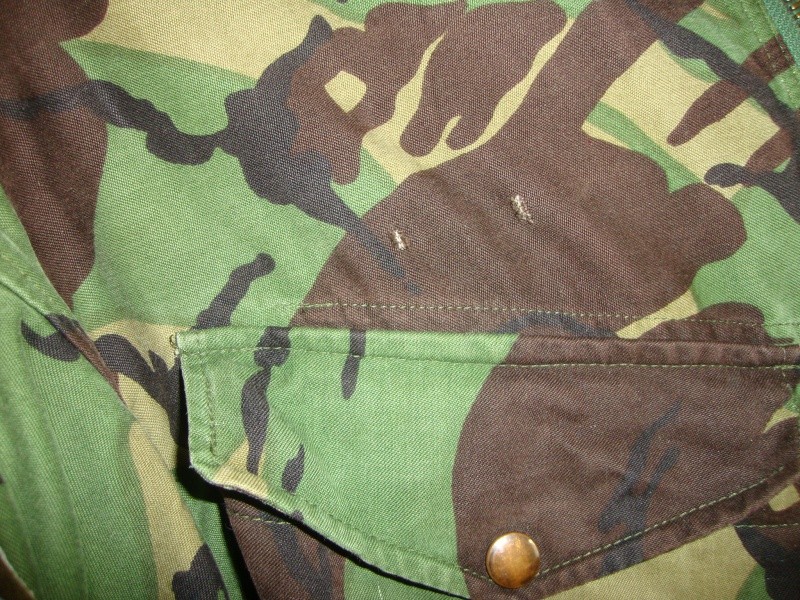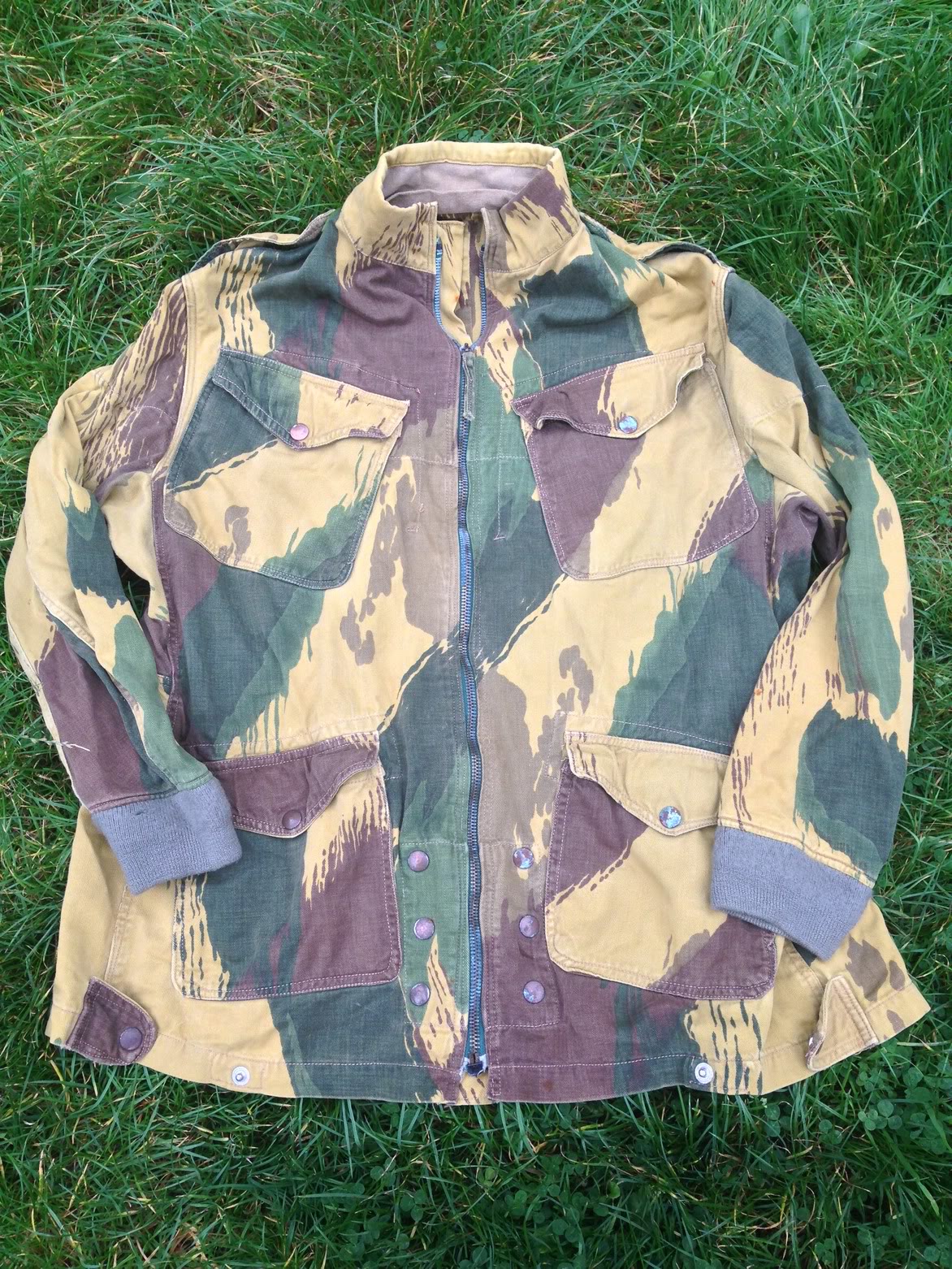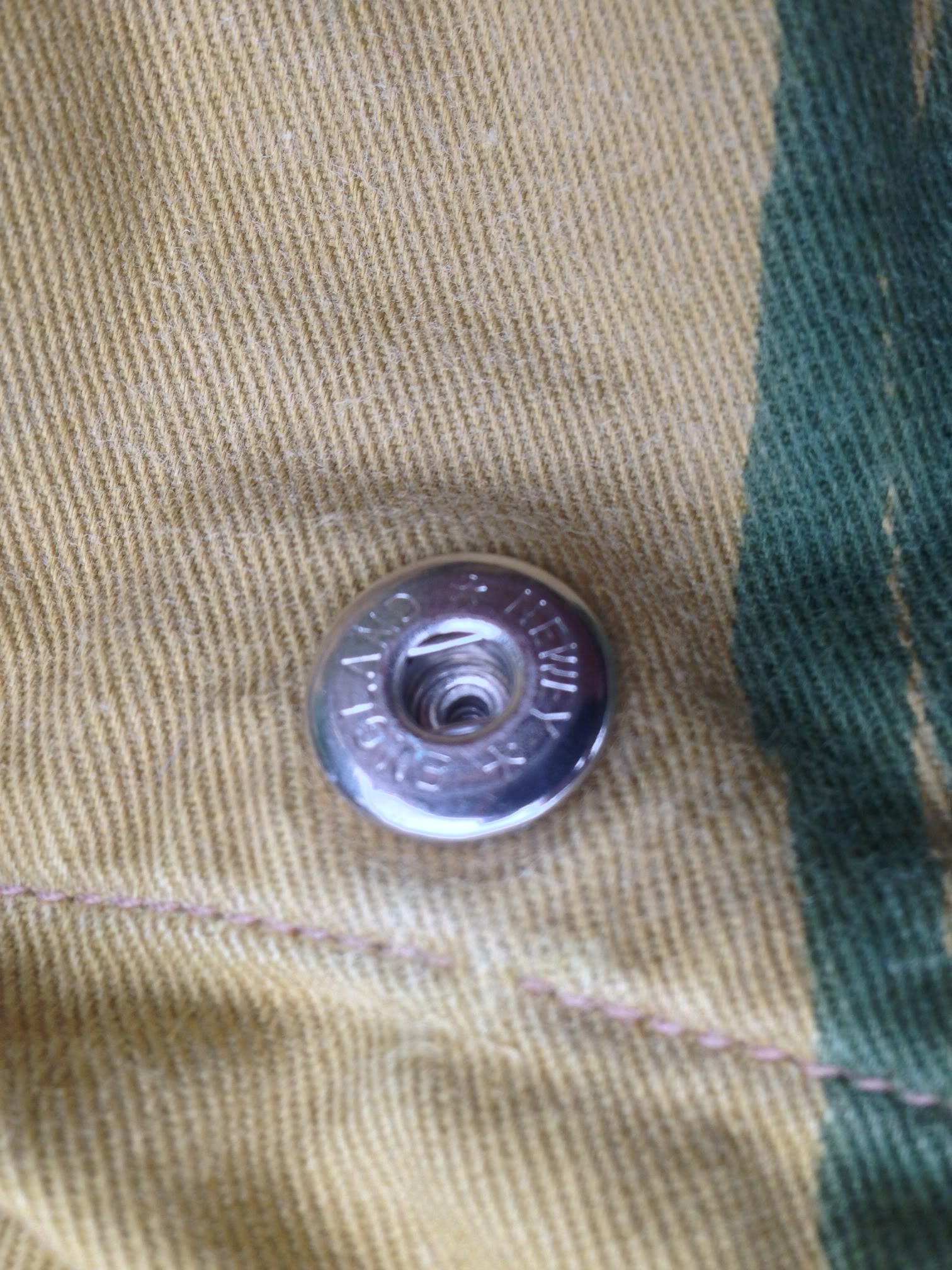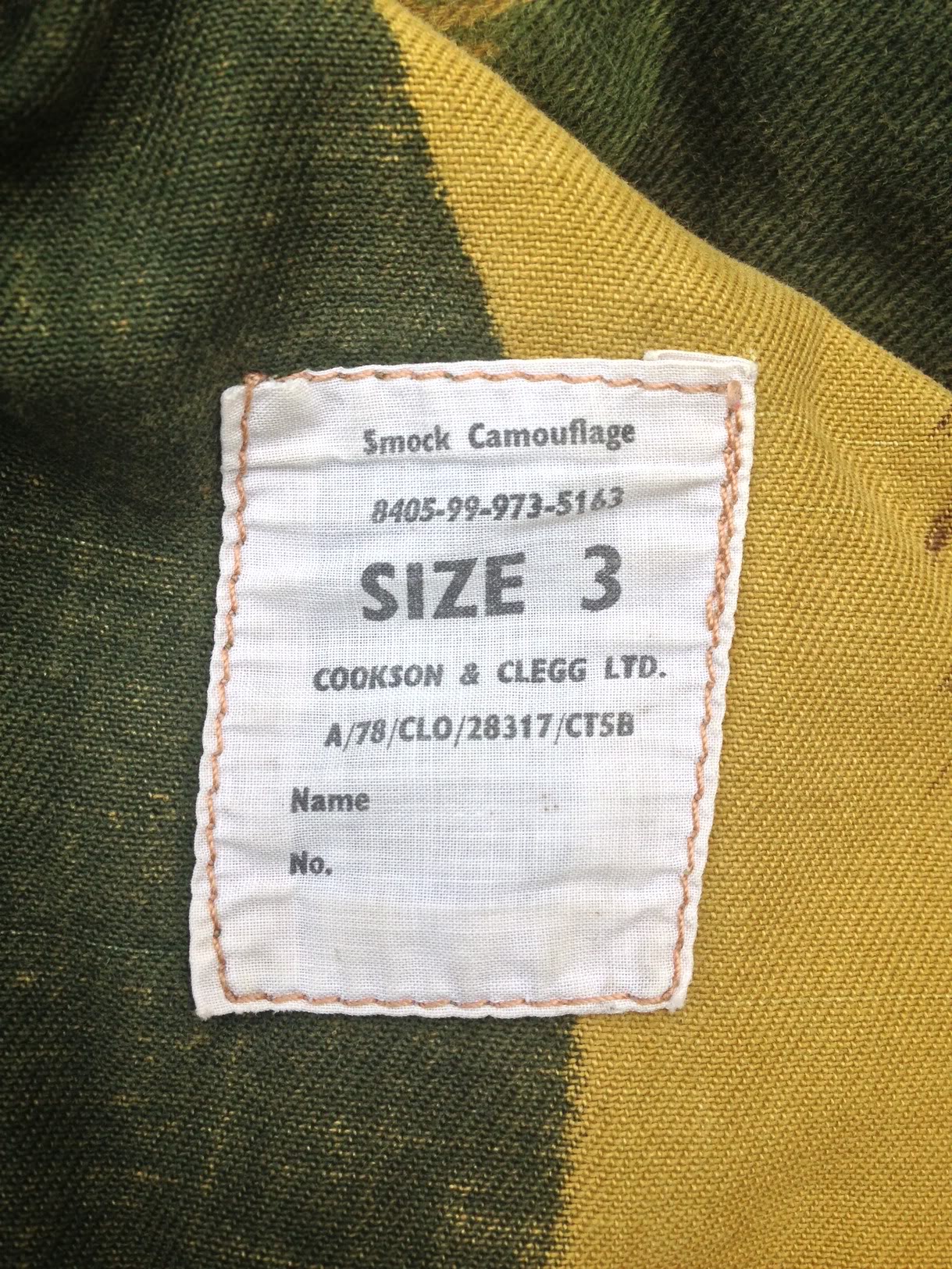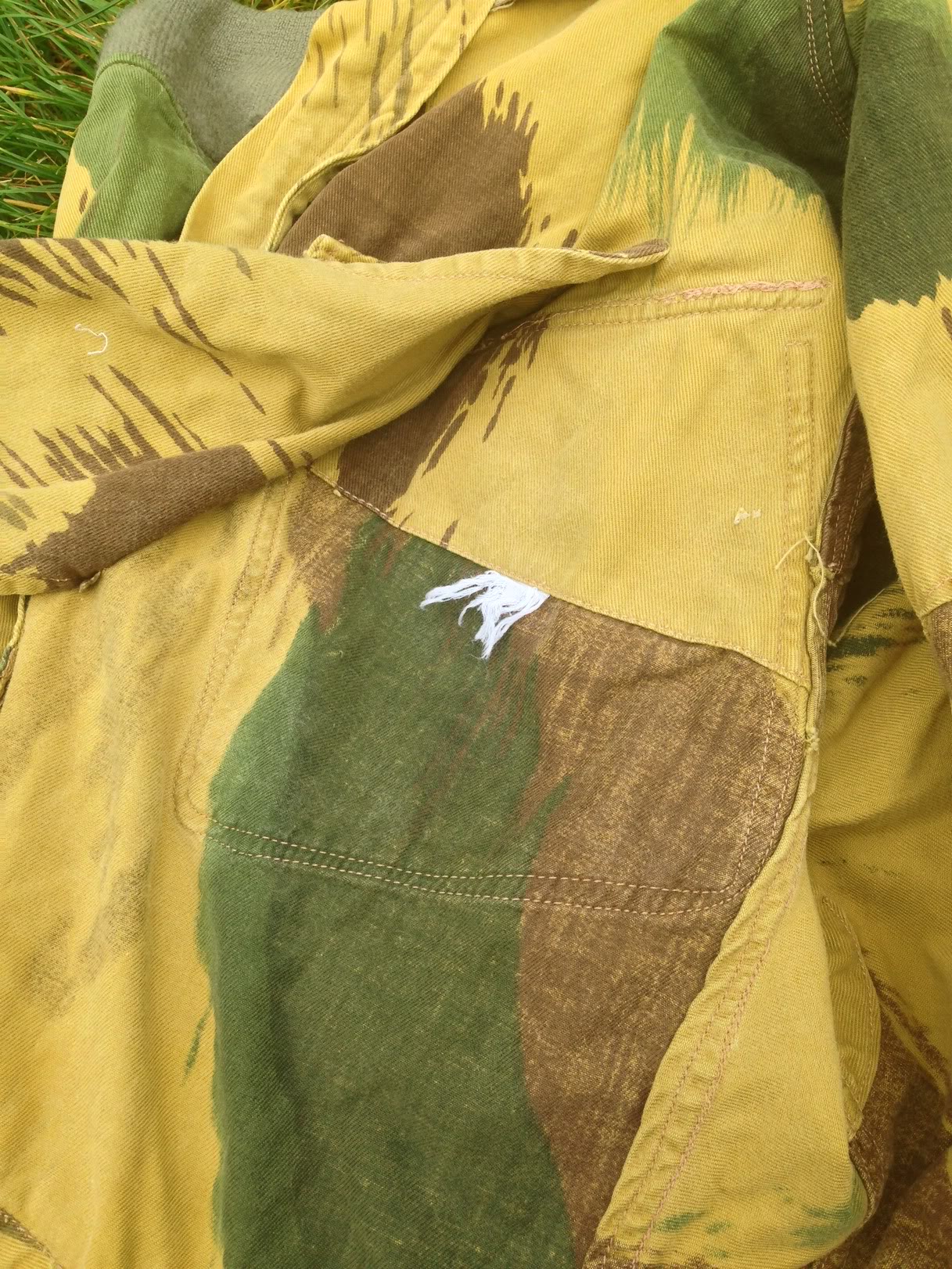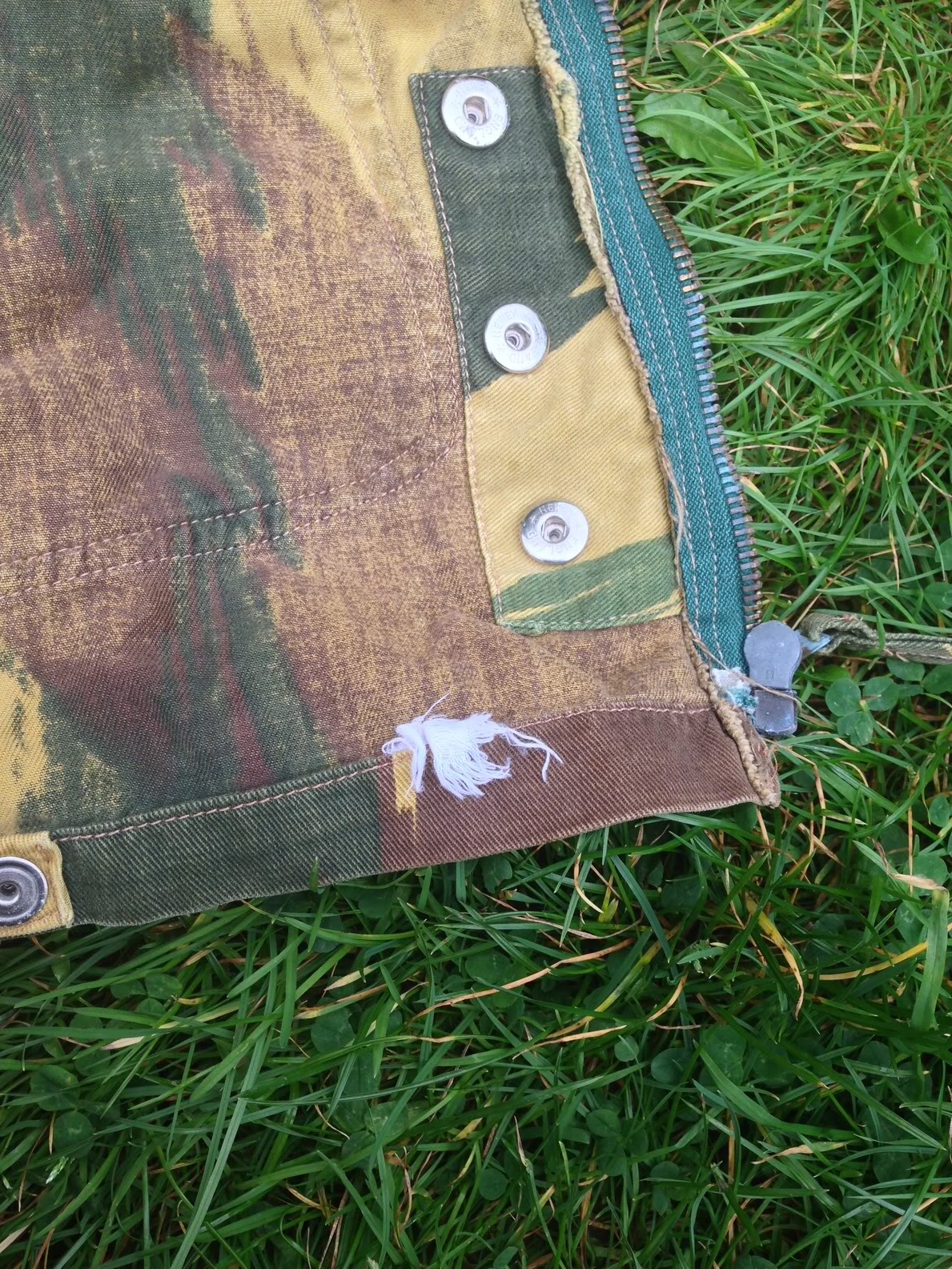 by Bury_Dave Fri May 04, 2012 7:26 am
by Bury_Dave Fri May 04, 2012 7:26 am
Thought I'd post a piece here. A brief history of the Denison somck and its' demise ........ mostly of my own hand with a couple of references from elsewhere. All errors and omissions are mine own !!
The Maroon beret and Denison were the identifying features of the Parachute Regiment from WW2 to the late 1980's and whilst the cherry beret is still worn by the Regt - and copied by many other nations now - the demise of the Denison smock remains something which most paratroopers would like see reversed by having it go back on general issue.
The original 'Smocks, Parachutists' was a brown drill copy of the earliest German smocks and was of a step-in design. Basically a pair of coveralls with the legs removed at mid thigh. It had press stud closing at the cuffs and to close up the leg openings and a zipper and press stud opening down the front of the smock. It also had zippers down each side roughly where the hips are that permitted access to trouser pockets. It was used on the Bruneval Raid and the Tragino Viaduct raid. Early use taught the Brits what the Jerry already knew and had corrected - that access was limited and answering the call of nature meant removal of the smock which made the process take much longer and left you much more vulnerable if you got caught out midstream. Also, the original concept of wearing the smock over your webbing and having to remove the smock, unhook your webbing , re-don the smock and put your webbing back on before you could fight left paratroopers very vulnerable on the ground. A lesson learned the hard way by the Fallschirmjager in Crete, where so many were cut down on landing due to being unable to access weapons and ammo.
So, due to the reasons above, a new design for a smock for parachute troops was required. It is not clear whether Major Denison designed the smock or created the camouflage pattern and its’ method of application. Major Denison worked for a camouflage unit. The early Denisons were made from a material which had its’ camouflage applied by hand onto a sand coloured material. Green and brown disruptor patterns were applied by brush. A very different process to the Germans more scientific and industrialised method of having printing rollers. The types of dyes used faded very quickly with use and washing. The basic design was a large, baggy, part-zippered chest opening, 4 pocketed smock design which had 2 internal chest pockets and a tail piece that could be fixed to one of three pairs of press studs at crotch level which prevented the smock catching the wind during the parachute descent. When not in place, the tail hung down and it is still not entirely clear if the tail was meant to be cut off after landing or not. It usually was or, on training, was press studded to one of the two gathering tabs at either hip. HM Govt’s clothing and equipment was only ‘modified’ on operations !!
This smock saw its’ first combat in North Africa and then Sicily before being the most common type used in Normandy.
Due to the expansion of the Airborne Forces – including gliderborne troops – an ‘economy’ smock was introduced in 1944. The colour base was darker – to reflect the coming emphasis on operations in North Western Europe. The tail was now able to be properly press studded out of the way to two female stud on the rear of the smock, the knit cuffs were dispensed with and replaced with button tabs part way up the sleeve. There was no official change of nomenclature for the smock.
Post was stocks were used after the end of WW2 (some being issued into the 1970’s !), although some new smocks with slightly different colour tones were made in the early 1950’s. There are photos of the Suez debacle showing Paras wearing definitely non WW2 pattern smocks.
The next significant change came with the introduction of the 1959 pattern. This was a more fitted garment which saw the reintroduction of knit cuffs and the official introduction of a full length zipper. This had been a common mod – particularly by officers and leading many to incorrectly think that any full length WW2 Denison must be an officers pattern. There was a private purchase smock worn by a very few senior officers. But this was of significantly different design and material to be of no consequence here. The colour scheme of the ’59 pattern changed and was of more vertical brush strokes on a khaki base material. There are numerous variations of camouflage colour scheme on the ’59 pattern smocks, including a sand coloured desert version which by dint of its’ difference to preceding smocks, implies it was by design and reflecting the Regiments involvement in campaigns like Aden and lots of Colonial postings like Egypt and Libya. Official documentation of this have yet to be uncovered. The final colour scheme came in 1972 with a mid khaki base colour and a more repeated pattern. This smock also differed in having ‘Smock, Camouflage’ on the label rather than the ‘Smock, Denison’ of the previous issues of the smock. It’s quality was noticeable lower than previous models.
Despite the smock being replaced by the Disruptive Pattern Material (DPM) in the late 1970’s, the removal of the Denison smock can be traced back to 1961. The Executive Committee of the Army Council on 30th June, 1961 decided that the Denison smock “should not be retained”. The Parachute Regiment were contacted about this and 16 Para Brigade acknowledged this with the publication of a “Rules of Wearing Combat Dress” on 5th June 1962.
Following this, in April 1968, the Quarter Master issued guidelines on the introduction of DPM clothing and the replacement of the Denison smock.
Despite this, there is no sign of any consternation within the Parachute Regiment until April 1971 – that’s 10 years after the original statement to remove the Denison from issue !! The Para Regt contacted the Deputy Quarter Master General for clarification. The DQMG lays out the preceding 10 years of decision – inferring Para Regt acknowledgement – in its’ response and concluding with the paragraph.
“So I am afraid the whole subject is a well documented fait accompli, and unless you can get your Colonel Commandant to generate enough heat to get the Army to reverse its’ decision, I would like to be invited to the wake wearing my ’44 pattern smock!”
The fait accompli did not go unanswered, with a response that in 1965/1966 the Para Regt had, in fact, rejected a move to a DPM uniform, instead keeping the Denison smock and olive green trousers to use in both European and Tropical environments. However, the development of a new tropical DPM uniform was well underway with a planned introduction in 1973, and with it the Para Regt’s last chance to retain the Denison on cost saving grounds.
As with all things Ministry of Defence projects, the development of the tropical uniform dragged on throughout the 1970’s and the 1973 planned introduction date. Stocks of existing Denisons ran low and the new Smocks camouflage, 19’72 pattern was ordered as an interim measure. However, trousers DPM were introduced to replace trousers, olive green and this resulted in instances of the Smock, camouflage being worn with trousers, DPM which caused great consternation amongst the powers that be and secured another release of trousers, olive green !
There is no exact date for the withdrawal of the Denison and first issue of the Smock, Parachutists, DPM but most paras thing it was in 1977 and that by 1980 the Denison was gone forever. I recall seeing Denisons still being used by the RAF Regiment up to 1980 and a few TA Paras still in Denisons into the early 1980’s. Prince Charles, the Regiment’s Colonel-in-Chief, still wears his Denison when visiting the Regt – even with trousers Desert DPM !!
There is also a photos of one of the Royal Marines Naval Party on the Falklands Islands in 1982 wearing a Denison. They are being lined up after surrendering to the Argentine special forces outside the Ambassador’s Residence. Perhaps the last time a Denison was worn in combat ??
As a footnote, the Denison camouflage was a follow-on from that used on the SOE jumpsuits that were worn by agents parachuting into occupied Europe in WW2 and which was worn over their civilian clothing to protect it whilst dropping in and which was to be buried after landing. This brush-stroke camouflage was copied and adapted by the French for their Lizard pattern and this in turn was the inspiration for Tiger Stripe.
Last edited by Bury_Dave on Fri May 04, 2012 7:40 am; edited 1 time in total




 by Bury_Dave Fri Mar 16, 2012 11:18 am
by Bury_Dave Fri Mar 16, 2012 11:18 am


